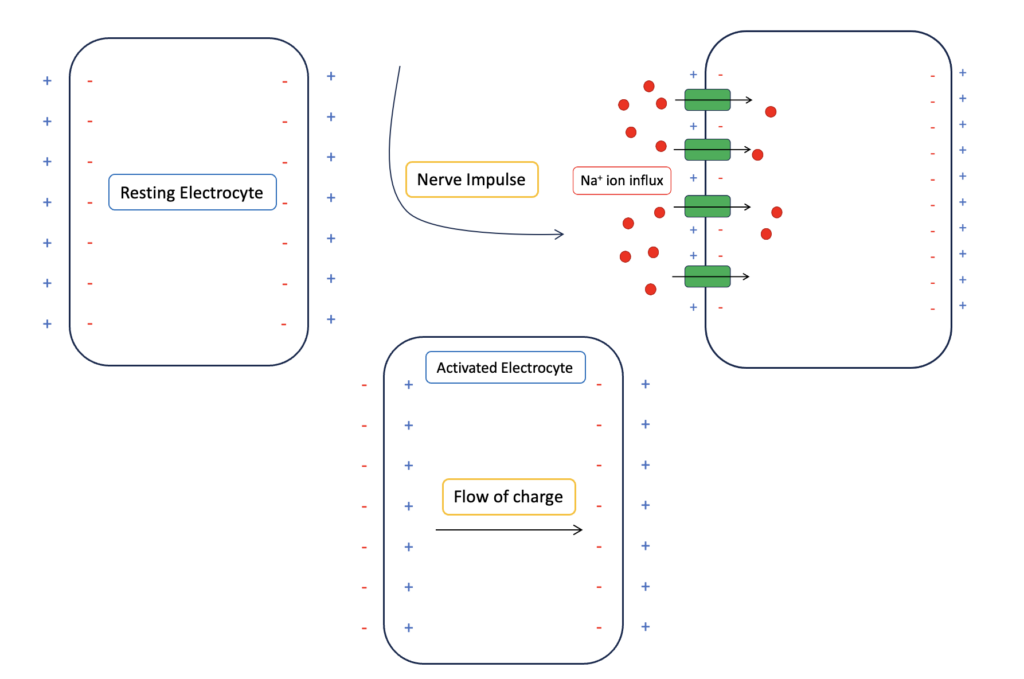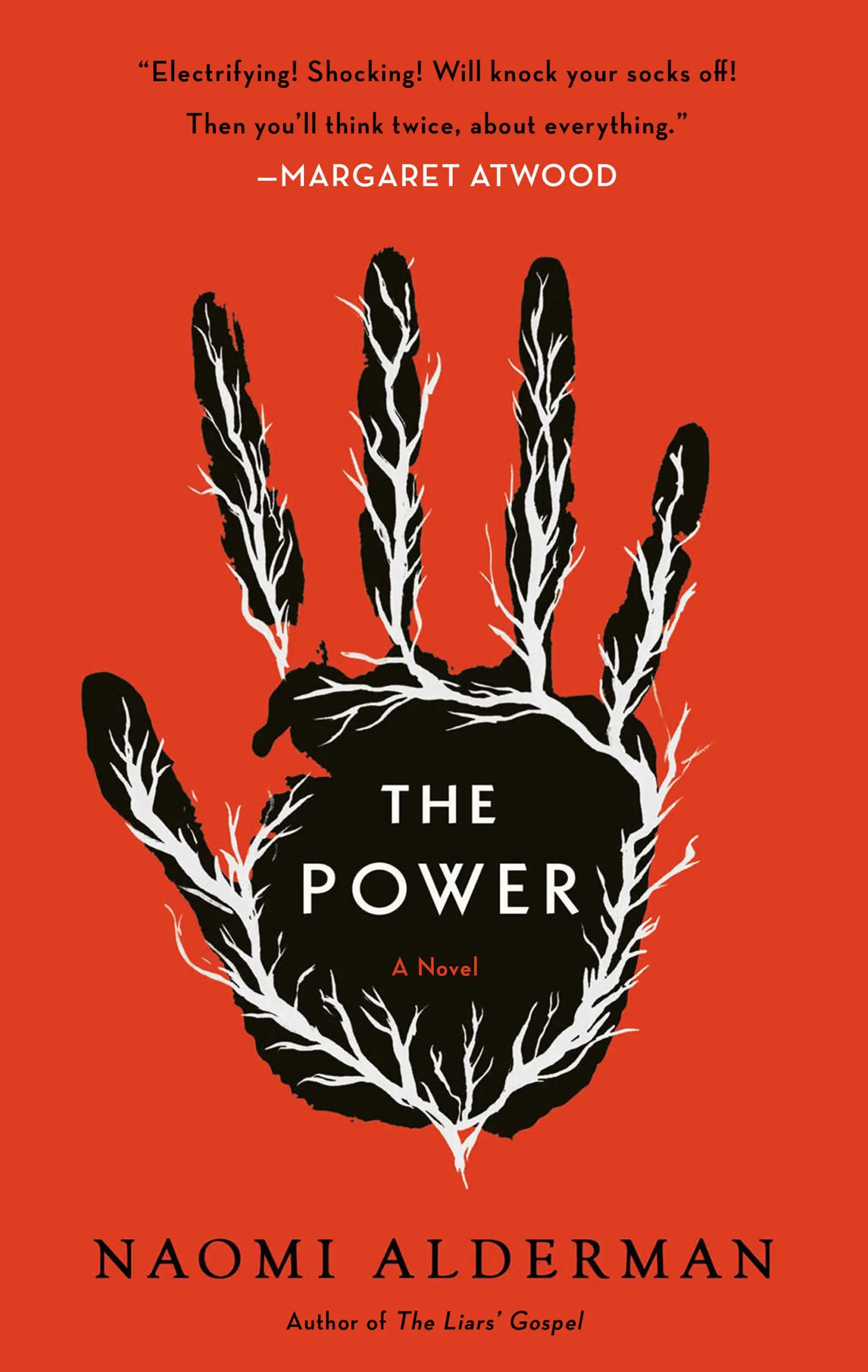This book is an exploration of the capacity of power to corrupt. It is set in the 10 years following the moment that women gain the ability to release electric shocks from their hands, making them more physically powerful than men.
An email exchange in the prologue contextualises the book as a piece of ‘historical fiction’ written in a world resembling ours but with a matriarchal, not patriarchal society. In these emails, a male author talks about his book with his female editor, and we get a glimpse of the same gender roles we see in our society today but performed in reverse. Through this, we are immediately presented with the idea that gender roles are determined by the presence or absence of power of each gender rather than innate characteristics, an idea that is revisited throughout the book.

The book that the fictional male author writes spans the ten years following the moment when women first acquired the ability to electrocute. At first, this ability allows women to escape exploitative situations they are trapped in by men, to fend off sexual assault and to have more confidence standing their ground in the workplace. But as women around the world become stronger and gain more power, there is a shift from women fighting for safety and equality to fighting for domination.
It becomes apparent that the email exchange at the start of the book takes place 5000 years after women first gained the ability to electrocute, showing that the matriarchal society depicted in these emails grew from a world with a patriarchal society over the course of 5000 years, continuing the overarching message of gender roles determined by power.
Through the concept of women with the power to electrocute, Alderman expertly explores power, human nature, gender roles and many more important sociological themes, but here’s the real question: how realistic is the scientific basis? Is it possible that women will one day wake up with the ability to electrocute their way out of the patriarchy?
Well, the obvious place to start is with electric eels. They can emit electric shocks of 500 V powerful enough to kill horses and humans via three different organs made up of a type of cell called electrocytes. These disc shaped electrocytes are arranged in bundles of stacks of 5000 – 10 000 cells that have equal charges at opposite cell membranes in their resting state (see right). When a nerve impulse arrives at one side of the stack, Na+ ions flow into the cells, increasing the positive charge inside the membrane at that side of the cell and creating a potential gradient across the cell. This causes a flow of electric charge across the electrocyte which is only 150 mV but the electrocytes are arranged in parallel, which builds voltage, and series, which builds current, so that the resulting cumulative electric release is powerful enough to travel through the water and stun their prey.

The women in this book can not only injure and kill people with their electrical power, they can sense the electrical power present in other women as well as remotely control other people’s movements and send their electric shocks through water to remotely attack multiple people at once. Electric eels can sense when their prey is hiding nearby using their ability to detect electric impulses, if they can’t see their prey, they send out a specific type of electric shock that makes the prey’s muscles twitch involuntarily so that it gives away its hiding place. So far so accurate – it’s biologically possible for animals to do the things these women can do.
The remaining scientific sticking points are:
- Would the electric organ that the women have be big enough to generate enough voltage?
- Is the mechanism of newly ‘awakening’ this power in women plausible?
Electrocytes make up 80% of the cells in electric eels, which can grow to be 2.5 m long. In this book, the women have a ‘skein’ which is an organ that spans the chest just below the collarbones – hardly 80% of cells, but I think an argument could be made for the organ containing more powerful electrocytes than those found in electric eels and for them being arranged in more amplifying parallel circuits so that the smaller organ could still be capable of generating large voltages.
The big question is, how do women acquire this ability? In the book it is caused by a build-up over generations of a chemical that was added to the water during World War II to protect the population from nerve agents. The theory is that this chemical remained in the water cycle, spread around the world, and triggered the development of the skein (the electrical organ in women) that became more and more developed down the generations until every baby girl was being born with one that worked. The younger women can awaken the electric power in the older women by giving them a gentle electric shock. These two theories are more difficult to explain using existing scientific knowledge. The antidotes to nerve agents work by inhibiting receptors that are stimulated by acetyl choline because nerve agents trigger excess release of acetyl choline and hence overstimulation of neurones. Aside from the fact that it would not be possible to feed people nerve agent antidotes such as these in the water without side effects, it is also difficult to imagine a mechanism by which they could cause the development of a new organ. However, I do think it’s a nice touch to base the growth of an electric organ on nerve agents and nerve cell stimulation/inhibition.
I find the concept of women awakening the power in each other through an electric shock slightly more plausible. This mechanism of action would have to be that the electric shock stimulates nerve impulses to the correct side of the skein so that the potential gradient is generated, and electricity released as it is in electric eels. I think it’s plausible that having felt this once, women could then have the ability awakened in them in the sense that they know what it feels like and that they can do it.
Overall, I think the science in this book is pretty sound. Fortunately/unfortunately the main fictional part of the science is the part that makes any of it possible in the first place – the original trigger for the development of the electric organ, and in particular, in only half of the population. So whilst the human nature, behaviour and societies depicted in this book are very real, the science, for the most part, is still fiction.
By Isobel Hirst
Bibliography
Catania Kenneth C. (2019). The Astonishing Behavior of Electric Eels. Frontiers in Integrative Neuroscience. 30. doi: 10.3389/fnint.2019.00023
Bennett, M. V. L. (1970). Comparative physiology: electric organs. Annu. Rev. Physiol. 32, 471–528. doi: 10.1146/annurev.ph.32.030170.002351

